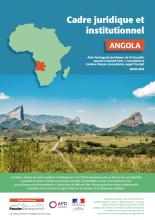Land Library Search
Through our robust search engine, you can search for any item of the over 73,000 highly curated resources in the Land Library.
If you would like to find an overview of what is possible, feel free to peruse the Search Guide.
/ library resources
Showing items 1 through 9 of 6301.Le Projet Global sur la Promotion d’une Politique Foncière Responsable (ProPFR) avec sa composante à Madagascar vise une amélioration de l’accès à la terre des populations rurales des régions Boeny et DIANA au travers l’adhésion volontaire à la procédure légale de sécurisation des droits individu
Les fiches « Analyse des cadres juridiques et institutionnels » du CTFD fournissent par pays, un état des lieux des dispositifs organisant le foncier et l’accès aux ressources naturelles (renouvelables ou non), et en étudient les liens avec les processus de décentralisation à l’œuvre dans les dif
Land information is critical for equitable land governance that benefits the most vulnerable and drives economic growth, sustainable development, and food security.
Land rights are fundamental sources of tension in Liberia, so transparency about land information is both essential and highly politicized.
In Mozambique, the law recognizes certain forms of occupation as constituting legal tenure and nationals can claim this recognition of their right to occupy and use land allocated through customary norms/practices.
Em Moçambique, a lei reconhece certas formas de ocupação que constituem posse legal e os(as) cidadãos(ãs) podem reivindicar esse reconhecimento de seu direito de ocupar e usar a terra alocada por meio de normas/práticas costumeiras.
The Global Programme “Responsible Land Policy” (GPRLP) is part of the BMZ Special Initiative "Transformation of Agricultural and Food Systems" which aims to reduce extreme poverty and hunger. The GPRLP is implemented by GIZ and has nine country components.
This chapter traces the complex trajectory of land tenure reforms in Benin since the democratic transition and liberalisation of the economy in the early 1990s. It shows that conceptions of the problem of land tenure insecurity and the responses to it have often clashed.








